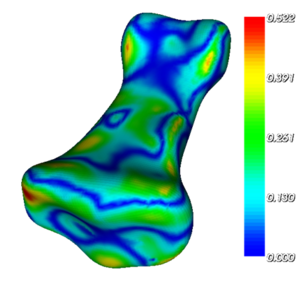Validation of Defined Regions of Interest Using Surface Scanning
From NAMIC Wiki
Home < Validation of Defined Regions of Interest Using Surface Scanning
Objective:
- To evaluate manual and automated segmentation routines using surface scans of disected bones from cadaveric specimens
Progress:
- CT images of the hand and wrist have been obtained
- Four hands have been disected and bones extracted
- Surface scanning for these disected bones is completed using a Roland LPX-250 Laser Scanner
- Manual tracing of the CT images is completed
- Evaluate reliability of the manual tracers is complete using relative overlap
- Tools have been developed to reorient surface axes and to register the manually defined model and the surface resulting from laser scanning
- Distance maps for the manual segmentation have been generated.
- The effect of various post processing routines have been studied relative to changes in the surface geometry relative to the laser scan.
Publications:
- DeVries NA, Gassman EE, Kallemeyn NA, Shivanna KH, Magnotta VA, Grosland NM. Validation of phalanx bone three-dimensional surface segmentation from computed tomography images using laser scanning. Skeletal Radiol. 37(1):35-42, 2008.
Key Investigators:
- Iowa: Nicole Grosland, Vincent Magnotta, Nicole DeVries
Links:
References:
Figures:


